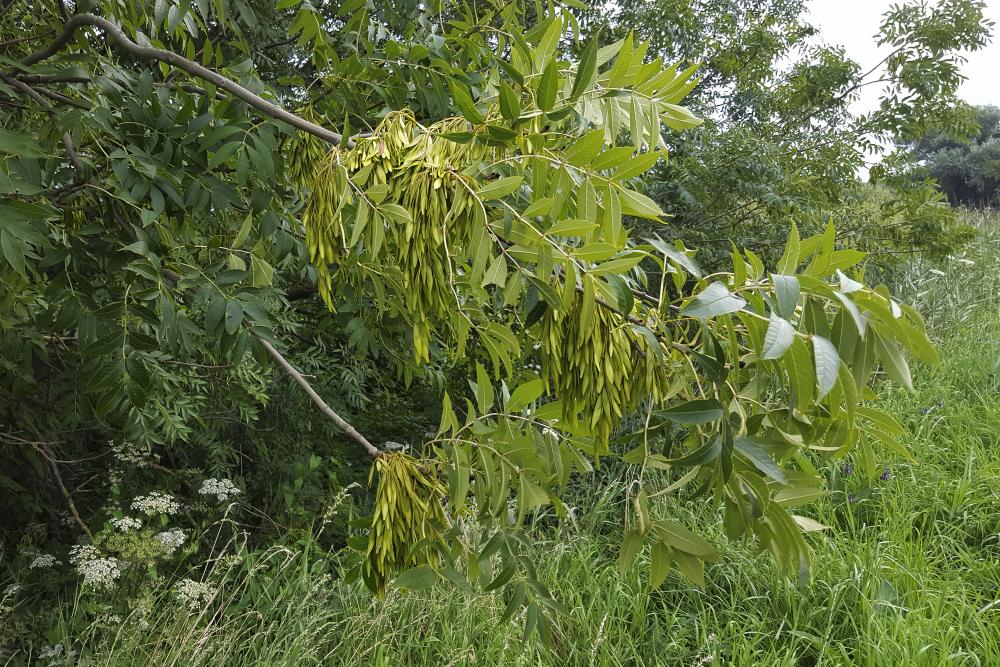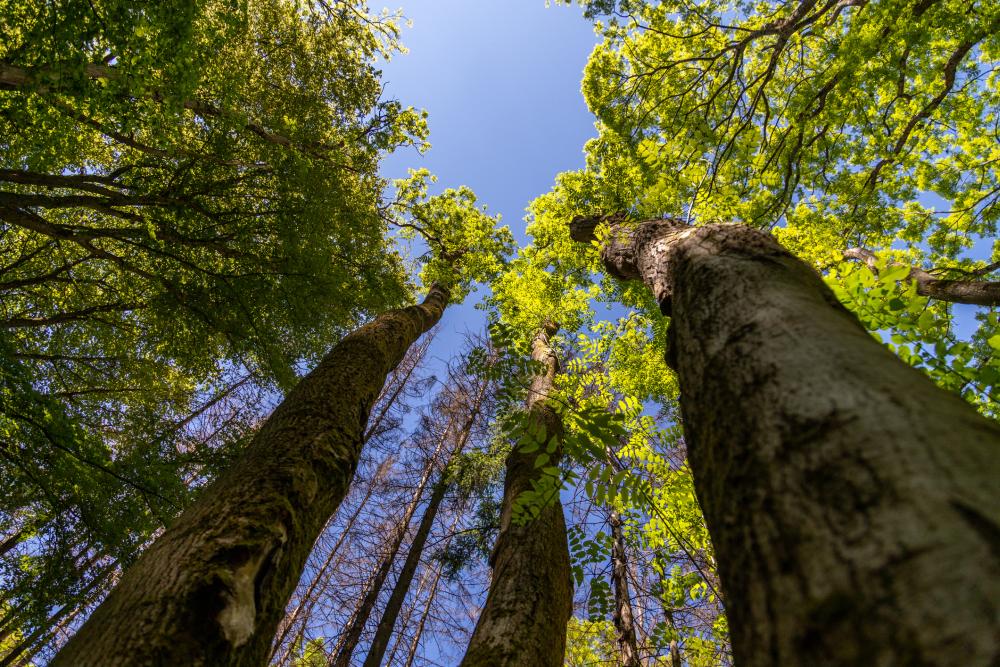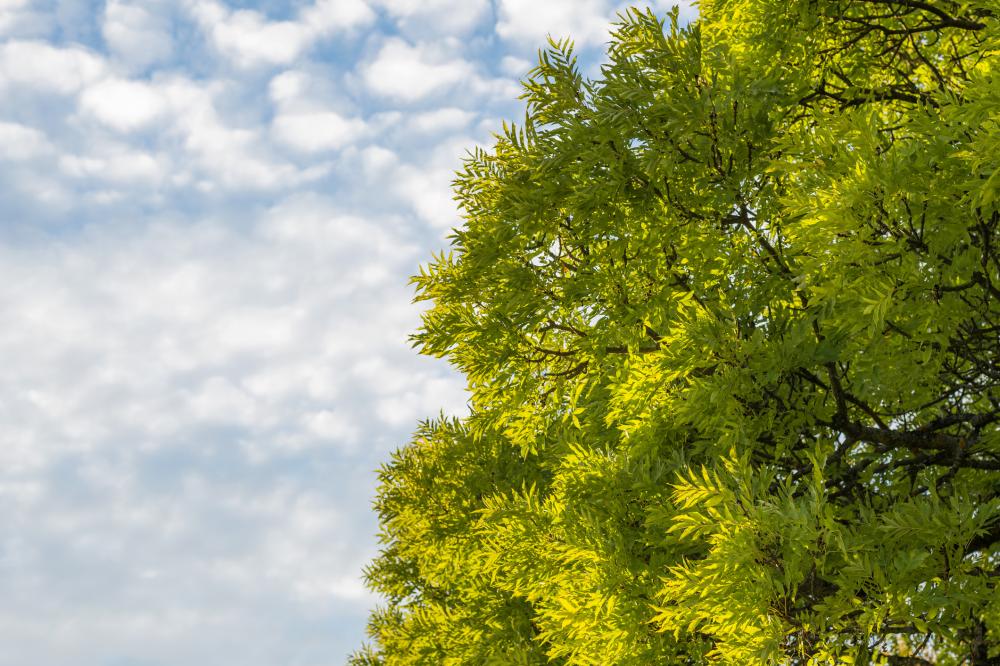Ash Tree – All You Need to Know About Growing and Caring for Beautiful Ash Trees
With its sparse foliage and dramatic branch structure, the ash tree strikes a good pose. Other trees have lush foliage and breathtaking blooms, but the ash tree catches the eye with its overconfident demeanor. It’s the kind of tree to make a statement in your yard no matter the season. Even in the winter, when the leaves drop, the smooth twigs stand out with their rows of dark, velvety buds.
It’s no wonder then that the ash tree is so popular among homeowners, and out in the wild, it grows everywhere from the Arctic Circle to the temperate parts of Africa. So what does it take to grow an ash tree in your garden or lawn? This article covers all the relevant points of interest of the tree, its growth, and care.
All About the Ash Tree
As a member of the olive family, the ash tree (Fraxinus) has about 45 species scattered all over the world. Most of those species are deciduous, although some varieties that grow in the subtropics are evergreen. In Norse mythology, one such evergreen ash tree cradles the cosmos and its nine worlds.
The average ash grows to about 100 feet in the right conditions. These conditions include rich, well-drained soil and cool temperatures. The bark of the tree is another distinctive feature. It’s usually gray and smooth throughout the tree’s life, with fissures showing only when the tree gets on with years.
But when the tree is flaunting its full dome-shaped foliage, that’s when you get the most out of it. The light green leaves grow in pairs on tender twigs. Each twig carries between 3 to 6 pairs growing alternately. The oval pointed leaves can reach up to 12 inches long. The whole foliage usually moves to face the sun. The leaves stay green until they drop in the fall.
The flowers of the ash usually emerge in the early spring and long before the leaves have made a show. Most trees will either have male or female flowers, although some ash trees will have both male and female flowers growing on different branches. The flowers are purple and grow in clusters at the end of the twigs.
After the wind pollinates the flowers, long-winged fruits develop in clusters. They mature by the end of the fall and drop to the ground during the winter.
Ash Uses and Benefits
There’s a reason the ash tree appears in many cultures and methodologies in a positive way. It has also been a source of healing and nourishment in traditional medicines. Not to mention its other mundane uses in making furniture and construction. Here are some of the common ash tree uses and benefits.
- As a laxative, the leaves of the ash have been recommended for people suffering from constipation.
- The leaves were also believed to have an anti-inflammatory effect and were used for treating arthritis, rheumatism, and gout.
- The bark of white ash was considered an effective treatment against dysmenorrhea.
- The bark was also a source for extracting gum which is rich in mannitol, a sugar alcohol substance that has many uses as a sweetener and in medicine.
- The leaves and bark of some ash tree varieties have been used as a source of food. In some cultures, the leaves are consumed as refreshments.
- The young ash fruits have great flavors in marinades and can be crushed and used to alleviate joint pain.
- The dense, hard, but elastic wood of the ash tree is used to make baseball bats, bows, and tool handles.
- Swamp ash is a favorite material in making guitars.
- Ash veneers are a precious finish to many valued pieces of furniture.
How to Grow Ash
As with many trees, you have more than one option to start the ash tree. You could start it from seed which is an involving process that requires treating the dormant seeds to get them to germinate. Or you could go the easy way and cut an ash branch and plant it in the garden. The cutting doesn’t need special treatment and will grow roots and leaves in a short time. Here we cover both methods.
Growing Ash from Seeds
In the wild, the ash seeds stay dormant in their winged fruits for up to 2 years. But you don’t have to wait all that long to get them to germinate. With a complex process called warm and cold stratification, the seed will be ready in as low as 9 months.
- Fill a small pot with potting mix and water it until the excess moisture flows out of the draining hole at the bottom.
- Allow the potting mix to settle for two hours before planting the treated seed.
- Plant the seed about a half-inch in the soil and cover it with a thin layer of the potting mix.
- Cover the pot with a plastic sheet that seals the rim and place it in the fridge for 3 months. Sprinkle the soil with water to keep it moist.
- Take the pot out of the fridge and place it on a heat mat set to 75 degrees Fahrenheit for the next 3 months.
- Bring the pot back to the fridge for another 3 months of cold temperature. Don’t let the soil go dry throughout those nine months.
- Now the seeds are ready to plant. Plant them in the soil and keep them moist.
- After another 6 weeks, the seeds will finally germinate.
Growing Ash from Cutting
This is the easier way that many people choose to start an ash tree. It still requires some special work and arrangement, but it won’t take as long as starting the tree from seeds.
- Choose a mature tree and locate a new growth that has been hardened. Cut 6 inches of the growth and remove the lower leaves.
- Fill a small pot with sand and water it until the excess water flows out.
- Dip the cutting in root growth hormone.
- Make a hole in the sand with your finger and place the cutting in the sand. Firm the sand around it so that it stands upright.
- Cover the pot with a plastic sheet and place it on a heat mat set to 70 degrees F.
- Keep part of the plastic cover loose to allow air to circulate.
- Water the pot regularly to keep the sand moist.
- When the cutting shows new growth, remove it from the mat and harden it by taking it outdoors for a few hours each day.
- When the soil warms up in the garden after the last frost, transplant the sapling to its permanent place outdoors.
Ash Care
Admittedly, growing ash trees is not the easiest gardening task, but it gets easier as the tree establishes. Caring for the young ash tree involves regular watering, feeding, pruning, and fighting off pests and diseases.
Soil
The type of soil you plant your ash in will vary depending on the ash variety itself. While some ash, like the European ash, is not particular about the soil quality or pH levels, others like black ash are a little finicky. To be on the safe side, make sure the soil is well-drained and slightly sandy. If you have heavy soil in the garden, amend it with sand and organic materials. The soil pH should be slightly acidic or neutral, keeping it between 5.8 and 6.8 for the best results. The more compost you add to the soil, the easier feeding the tree will become.
Water
As with most trees, the young ash tree in the first couple of years will need more water from you than in the latter parts of its life. Until the tree’s root system has fully developed and reached the moisture reserves in the deep layers of the soil, you’ll need to give the tree 2 inches of water a week. If you get rainfall, consider that part of the 2 inches quota. By the third year, you can cut watering down to one inch a week during the growing season. The ash tree doesn’t need as much watering once it has shed its leaves and gone dormant in the winter. For the evergreen types, you’ll need to keep watering the tree even in the winter.
Fertilizer
For the most part, you won’t need to fertilize your ash tree. If you have prepared the garden soil well and mixed in a generous portion of aged manure and organic compost, that’s all the feeding your tree is going to need. The slow-release compost keeps the roots fed until they grow deep enough to find the deposits of nutrients in the deep soil. But sometimes, the tree will show signs of a slow growth rate or appear to have stopped growing altogether. In that case, feeding the tree is needed. Apply a nitrogen-high fertilizer to trigger a growth spurt and keep the tree healthy. For the flowering ash varieties, increase the phosphorus content in the fertilizer to enjoy a season of brighter and larger blooms.
Pruning
Pruning ash trees doesn’t just mean removing dead, broken, and damaged branches. It also means training the main branch that will carry the canopy upward and be responsible for the final shape and spread of the tree. This is important with ash trees since they have opposing branch structures. You might also need to intervene and remove a healthy branch to allow sunlight and air circulation inside of the canopy. Pruning is essential for the health and vigor of the ash tree and should be done in the fall after all the leaves have dropped. Branch stubs should also be removed to prevent fungal build-up and diseases.
Pests and Diseases
Unfortunately, ash tree numbers have been dwindling in North America thanks mainly to a single pest, the emerald ash borer (EAB). This is why you should never plant an ash tree in your yard or garden within a 10 miles radius of an emerald ash borer infestation. The larvae of the EAB bore into the wood and block the vessels carrying moisture and nutrients to the leaves and branches. There’s no treatment against the aggressive pest, and it particularly attacks black and white ash. Once the tree is infected, you’ll have to cut it down and burn it.
But the EAB is not the only threat you have to contend with to keep your ash tree safe and healthy.
- Ash Yellows: A disease characterized by leaves turning yellow and falling before their time and cankers spreading across the surface of branches and trunk. This disease affects white and green ash more than other varieties.
- Anthracnose: This disease affects the foliage more than other parts of the tree. The leaves will have purplish spots, and cankers appear on the base of the trunk. It causes loss of leaves, shoots dying, and twigs withering.
- Verticullium Wilt: Another disease that causes the twigs and shoots to die just as soon as they emerge. Cankers will also appear on the main branches and the trunk of the tree. Eventually, the tree loses its vigor and dies back within a few years of getting infected.


